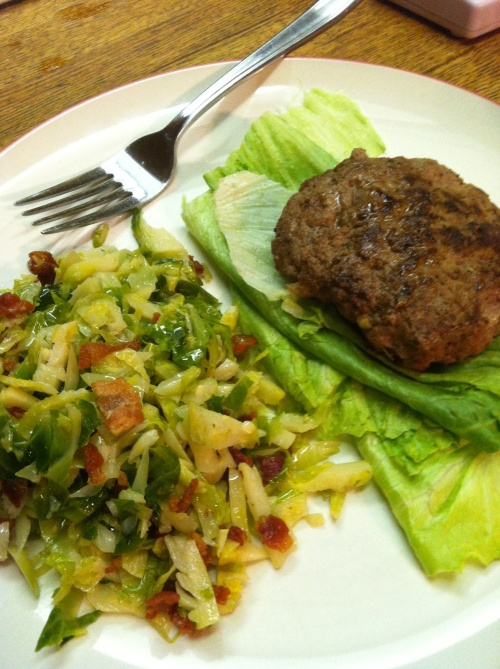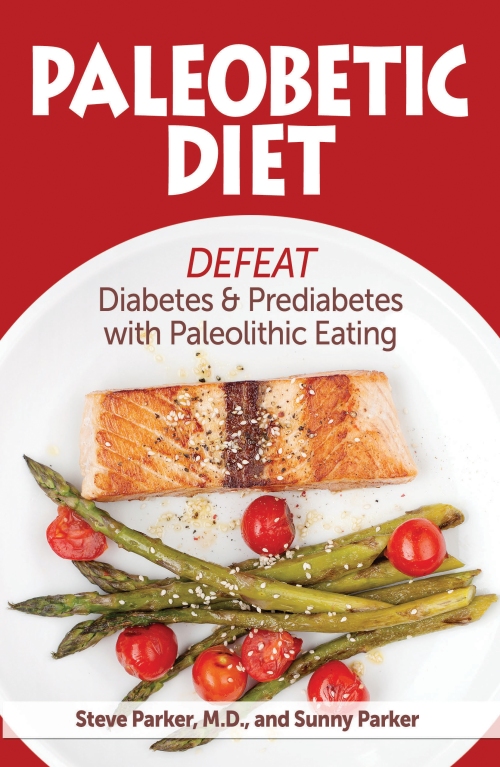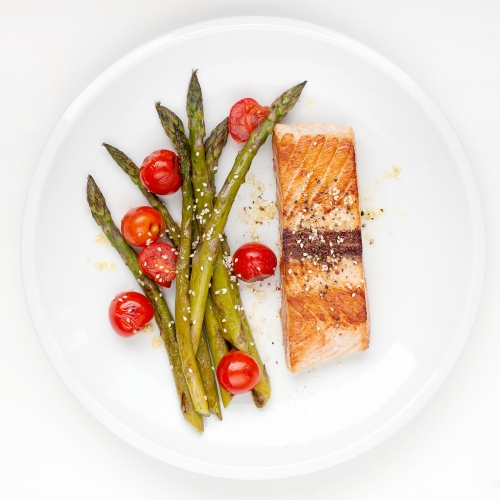
Paleo-compliant low-carb meal. I almost used this for my Paleobetic Diet book cover.
This is an important report because most diet studies last much less than one year. Details are in the American Journal of Clinical Nutrition.
Study participants were 115 obese (BMI 35) type 2 diabetics with hemoglobin A1c averaging 7.3%. Average age was 58. So pretty typical patients, although perhaps better controlled than average.
They were randomized to follow for 52 weeks either a very low-carbohydrate or a high-carbohydrate “low-fat” diet. Both diets were designed to by hypocaloric, meaning that they provided fewer calories than the patients were eating at baseline, presumably with a goal of weight loss. The article abstract implies the diets overall each provided the same number of calories. They probably adjusted the calories for each patient individually. (I haven’t seen the full text of the article.) Participants were also enrolled in a serious exercise program: 60 minutes of aerobic and resistance training thrice weekly.

Kayaking is an aerobic exercise if done seriously
The very low-carb diet (LC diet) provided 14% of total calories as carbohydrate (under 50 grams/day). The high-carb diet (HC diet) provided 53% of total calories as carbohydrate and 30% of calories as fat. The typical Western diet has about 35% of calories from fat.
Both groups lost weight, about 10 kg (22 lb) on average. Hemoglobin A1c, a reflection of glucose control over the previous three months, dropped about 1% (absolute reduction) in both groups.
Compared to the HC diet group, the LC dieters were able to reduce more diabetes medications, lower their triglycerides more, and increase their HDL cholesterol (“good cholesterol”). These triglyceride and HDL changes would tend to protect against heart disease.
SO WHAT?
You can lose weight and improve blood sugar control with reduced-calorie diets—whether very low-carb or high-carb—combined with an exercise program. No surprise there.
I’m surprised that the low-carb group didn’t lose more weight. I suspect after two months of dieting, the low-carbers started drifting back to their usual diet which likely was similar to the high-carb diet. Numerous studies show superior weight loss with low-carb eating, but those studies are usually 12 weeks or less in duration.

Low-Carb Brian Burger and Bacon Brussels Sprouts (in the Paleobetic Diet)
The low-carb diet improved improved lipid levels that might reduce risk of future heart disease, and allowed reduction of diabetes drug use. Given that we don’t know the long-term side effects of many of our drugs, that’s good.
If I have a chance to review the full text of the paper, I’ll report back here.
Steve Parker, M.D.
Reference: Jeannie Tay, et al. Comparison of low- and high-carbohydrate diets for type 2 diabetes management: a randomized trial. First published July 29, 2015, doi: 10.3945/ajcn.115.112581 Am J Clin Nutr















